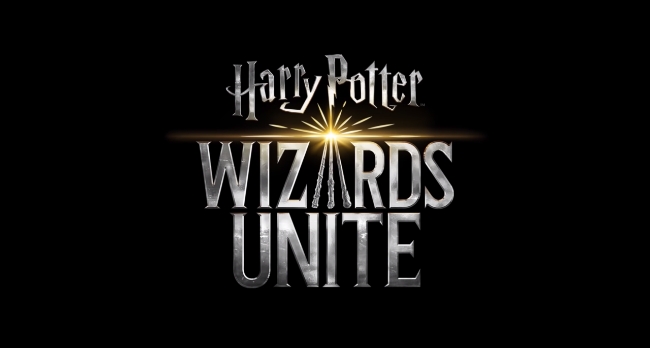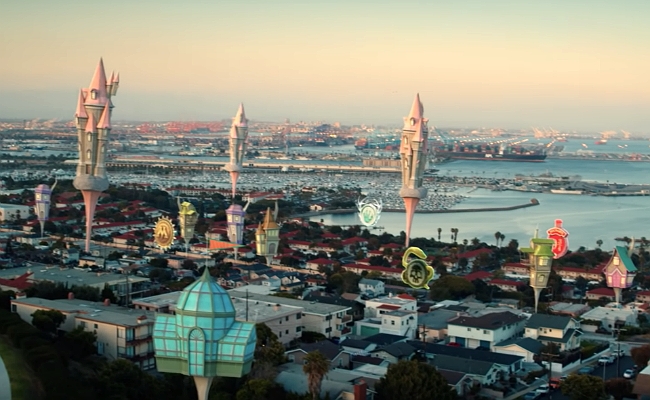
The best way to describe Harry Potter: Wizards Unite is ultimately as an attempt to force lightning to strike the same place twice. That’s because lightning can do exactly that — the old adage is kind of ridiculous when you consider the concept of extremely tall buildings and the existence of lightning rods. But the conditions have to be right and, in the case of Niantic and Warner Bros’ joint AR mobile game, it doesn’t feel like much of a storm is brewing.
The building certainly is towering enough to attract attention, as for many people who undoubtedly own mobile phones, it seems like the Harry Potter books are the only ever to be binded and sold for profit. The ubiquity of comparisons between J.K. Rowling’s fantasy epic and just about everything else in the real world are a meme of their own at this point, so a big budget Harry Potter mobile game is less a marketing partnership than an inevitability of life in 2019. But a fortnight into this augmented reality has made it unclear if even the most ardent fans of Hogwarts hijinks will stick around for long.
The stickiness of Pokemon Go in 2019, three years into its release, is surprising in a lot of ways. Older people who have no nostalgia for Pokemon Red or Blue on their GameBoys have taken to the game in a big way, and despite the initial problems with crashing and loading times and a nightmare that was the first Pokemon GO Fest, people are still playing. After some significant tweaks and additions it feels like a real game, one that’s gone far beyond a freemium time-waster with a big brand attached to it.

Harry Potter: Wizards Unite is built on the same technology as Ingress and Pokemon Go, but unlike the former two, the concept of exploring doesn’t really make sense in Harry Potter. To fix this there’s a “Calamity” in the wizarding world that has spread things — all kinds of things — from their rightful places out into the rest of the world. There are countless references to the books and movies, including digitized characterizations of those actors who played Harry, Ron and Hermione. It’s an interesting concept, and it makes the game a bit of a mystery, but it’s also kind of a silly way to get the highly-licensed gang back together.
Basically, this tweet.
me: can we get more than like 5 new pokemon in Pokemon Go?
Niantic: I heard you say "tiny hagrid on your sofa" pic.twitter.com/tWxHrFw6DB
— RebeccaWatson@bsky.social why not (@rebeccawatson) June 22, 2019
The game is essentially about filling a sticker book of things from the Harry Potter world, which may sound like an oversimplification but is exactly what it feels like. You tap on an icon and a quidditch ball or student in robes signifying a Hogwarts house appear trapped by some “magic,” often with a literal ball and chain around their ankle, and you try to do a magic gesture to free it. Again and again. And though there is a lot to do, it also gets freemium in a hurry.
You can only collect so much of the in-game currency organically in one day — 10 gold coins if you complete the “daily challenges” — but the game very quickly asks if you want to buy them using real money to expand your ability to do, well, everything. It sounds like a strange problem to have, but there’s so much to do in Harry Potter that you quickly run out of ways to do it without spending money. You can brew potions, grow plants, battle in wizard challenges, and a walk around a city has “foundables” pop up all over the map in huge bunches.
Getting to those challenges is a slog, though, even with the best of connections. You stand and wait for things to load and have no idea what it will be, if you want it, or if it’s a sticker you’re missing. And after you cast spells and find all the foundables you can, you’ll quickly be out of the lightning bolt-shaped currency you need to do most of the things the game has to offer. Running out happens often, and your lightning bolt capacity starts at 75. It sounds like a lot until it’s low and you get back 3-4 at a time while “dining” at Inns. You can, of course, pay to get more!
Harry Potter is a huge market to take into, though, and Niantic is smart to try establishing it. But given how heavily invested Niantic is in the Warner Brothers licensing for this game, it feels like this leans on pay-to-play a lot faster than its sibling properties. It’s also one that’s leaned heavily into the Augmented Reality that still doesn’t feel necessary in these kind of games. We’re seeing more and more AR games pop up and demand our attention, but it’s far more gimmick and drain on your phone’s battery than an actual advertised advantage, unless that changes with Minecraft World. But it’s far easier to catch Pokemon — and in the case of Wizards Unite, uh … keep magic a secret from muggles? — than it would be in the augmented world.
Other games have had similar AR angles. There’s a Ghostbusters game out there if you really like finding things in real life. But what’s made Ingress and Go so sustained and popular is that the travel makes sense, and the mechanics of the game reward exploring in a way that lines up with what the game is actually about. Walking to unlock Portkeys and get free meals to have the lightning bolts to do things in the game feels like an unfinished concept. And no one is playing these games for the AR effects that dress an incomplete idea.
It’s not the technology that keeps players engaged, it’s that they’ve developed into solid games that are far more than mobile phone time-wasters. For Go, that took a long time. And even now, years after the initial trailer not-so-quietly captivated fans by promising the real-world Pokemon experience many have dreamed of for years, it’s still not there. For the millions that have downloaded Wizards Unite looking to get Harry Potter in real life, I’m just not so sure there’s enough of an experience there to keep them playing through the bumps and growing pains that are sure to come for a game like this. And given how slow Wizards Unite is, and that it kicks you out of your other Niantic games when playing so they have to reload, it’s hard to ask gamers already hooked on them to pick being a wizard over anything else.
